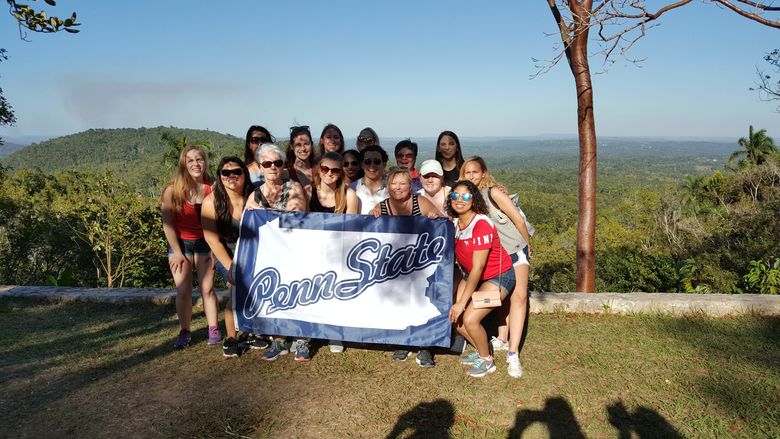Criminal investigations often begin away from the crime scene, in a curtained hospital room, where nurses treat and counsel the victims of violent crime or abuse.
“When victims need medical attention, they are brought to nurses first,” said Amy LeSuer, a lecturer in nursing at Penn State Erie, The Behrend College. “We help them before law enforcement officials can.”
When a patient is a crime victim, the initial examination can produce forensic evidence, which must be properly collected and preserved. Students in LeSuer’s forensic nursing class, a course offered in the college’s R.N.-to-B.S. program, learn bite-mark analysis, DNA collection and forensic epidemiology. They also learn to recognize signs of sexual abuse, human trafficking and psychological injury.
“It’s important for nurses to be educated on how to deal with evidence, how to communicate with victims and how to document their work in a way that will hold up in a court of law,” LeSuer said.
Guest speakers use examples of their own work to show students how to best help victims in hospital or clinic settings. Sexual assault nurse examiners, domestic violence workers, criminal lawyers and police detectives have met with the class.
Lt. Mike Dougan of the Millcreek Township Police Department taught students about evidence collection and storage and chain-of-command protocol. He explained the nurse’s role in the process.
“Forensic work is common sense,” he said. “Think before you act, move or speak.”
Nurses should cut around bullet holes when removing clothes, Dougan said. They should include a ruler or scale when photographing bruises or wounds. If they believe a wound was self-inflicted, nurses should place bags or some other cover over the victim’s hands. That can preserve gunshot residue.
Properly collected evidence supports a criminal case, Dougan said. It also can disprove other theories or defense tactics.
“Making an arrest with physical evidence is like putting a puzzle together,” Dougan told the nurses. “You can help us with some of the pieces.”
While emergency room and mental health nurses typically see a majority of victims, all nurses likely will deal with forensic issues at some point in their career, LeSuer said.
“No matter what sub-specialty the nurse works in, he or she has a responsibility to screen patients for abuse and safe home situations, and to educate them on the prevention of abuse,” she said. “The forensic nursing class really shows our students how important nurses are in the legal system.”

